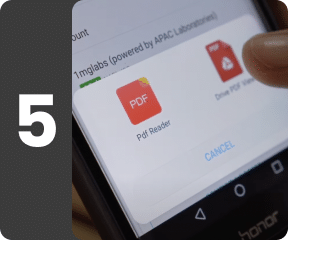Hemoglobin Free, Urine
Understanding Hemoglobin Free, Urine
What is Hemoglobin Free, Urine?
The Hemoglobin Free, Urine is a simple, noninvasive test that detects the presence of free hemoglobin in a urine sample. This test can help identify conditions like hemolysis or blood disorders that might cause RBC breakdown within the bloodstream , thereby releasing the hemoglobin in plasma which gets excreted in urine as hemoglobinuria(presence of hemoglobin in the urine).
Hemoglobin is an iron-containing protein in our RBCs that carries oxygen throughout your body. However, when red blood cells are destroyed (hemolysis), free hemoglobin can be released into the blood and subsequently may pass into the urine. This free hemoglobin can be detected through the Hemoglobin Free, Urine test. Unlike hematuria (blood in urine), where whole red blood cells are present in the urine, free hemoglobin in the urine (hemoglobinuria) is a sign of red blood cell blood disorder. It can be caused by hemolytic anemia, reactions to transfusions, infections, or trauma. It can also suggest severe kidney injury, especially when heme is not adequately filtered by the kidneys.
The doctor may suggest the Hemoglobin Free, Urine if symptoms of hemolytic anemia are present such as weakness, shortness of breath, palpitations, rapid heartbeat, paler skin, jaundice, or blood in urine. This test may also be advised to an individual having a history of blood transfusions or having infections or kidney disease. It is taken for follow-up treatment responses for blood-related and kidney diseases.
A positive test result shows the presence of hemoglobin in the urine, which may point to an underlying problem. An absence of hemoglobin in urine signifies a negative result, indicating that there is no sign of concern. In cases of hemoglobinuria, doctors may conduct additional tests like blood tests, urine culture, or imaging tests to evaluate the source of hemolysis and help guide proper treatment.
Drink enough water to provide a urine sample. A midstream urine sample should be collected into a sterile container provided by the sample collection professional. Women are advised not to give a urine sample during the menstrual period unless prescribed. Several factors such as vigorous physical activity or menstrual blood, may lead to false-positive test results. Therefore, it is essential to inform the doctor about any recent exercise, medical conditions, or medications that could affect the test results.
Don't self-medicate at home solely based on these results. Always consult a doctor for a proper understanding of the test results. Narrate the complete medical history to help the doctor correlate the clinical and laboratory findings. The results will help them determine the medical condition and formulate a treatment plan.
What is Hemoglobin Free, Urine used for?
The Hemoglobin Free, Urine test is done:
- To evaluate the presence of free hemoglobin in the urine as an indicator of hemolysis or other blood-related disorders.
- To assess kidney function and detect possible kidney damage associated with hemoglobinuria.
- To diagnose and monitor hemolytic anemia or blood transfusion reactions.
- To find the root cause of unexplained symptoms, including dark-colored urine, fatigue, anemia, shortness of breath, blood clots, etc.
- To detect potential kidney complications from hemoglobin-related conditions.
- To help diagnose conditions such as sickle cell disease or thalassemia, in which red blood cells break down into fragments or abnormal shapes.
- To monitor the cases of hemolytic anemia or kidney disorders causing hemoglobinuria and assess the treatment response.
What does Hemoglobin Free, Urine measure?
The Hemoglobin Free, Urine test is used to detect the presence of free hemoglobin in urine samples. Typically, hemoglobin remains contained within red blood cells and is absent from urine. However, during the process of red blood cell destruction (hemolysis), hemoglobin is released into the blood. When the level of hemoglobin in the blood is too high for the kidneys to filter and reabsorb, it leaks into the urine resulting in hemoglobinuria.
This test plays a crucial role in identifying various underlying health conditions. It can reveal disorders that result in excessive red blood cell destruction, including hemolytic anemia, transfusion reactions, or autoimmune diseases. Additionally, the test aids in evaluating kidney function because elevated levels of free hemoglobin in the urine may result in kidney injury. Furthermore, it serves as a useful screening test for blood disorders such as sickle cell disease or thalassemia, which are characterized by abnormal breakdown of red blood cells.
Answers to Patient Concerns & Frequently Asked Questions (FAQs) about Hemoglobin Free, Urine
Frequently Asked Questions about Hemoglobin Free, Urine
Q. What is the Hemoglobin Free, Urine test?
Q. When is the Hemoglobin Free, Urine test performed?
Q. How is the Hemoglobin Free, Urine test done?
Q. Is there any preparation needed for the Hemoglobin Free, Urine test?
Q. What does the presence of hemoglobin in urine mean?
Q. What does a negative result mean?
Q. How often should this test be done?
Q. Can I eat or drink before the test?
Q. How are hematuria and hemoglobinuria different?
Q. How does Tata 1mg ensure accurate lab test results?
Book a Hemoglobin Free, Urine test at home near me





Other tests









